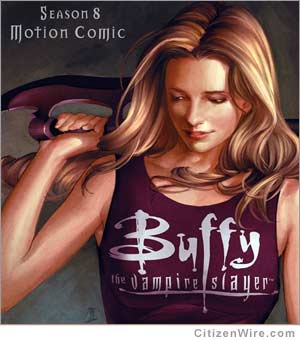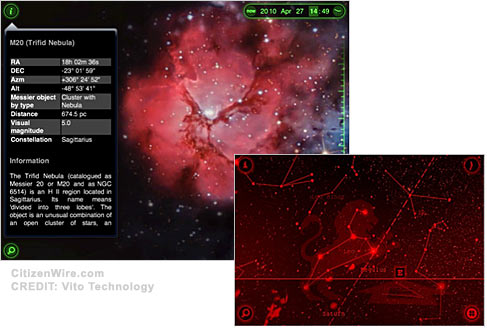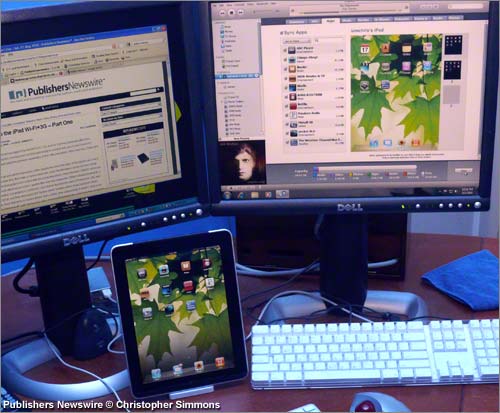REVIEW: Buffy the Vampire Slayer ‘Season 8 Motion Comic’

REVIEW: As a long time Buffy The Vampire Slayer fan, I tried reading the original “Buffy” comic book when it hit the stands a few years back, but couldn’t get past the “lifeless” version of Buffy sans the original actors, fun music, and dramatic moments. Even though I read a lot of comic books in my youth, the last graphic novel I read was the Frank Miller “Batman/The Dark Knight,” and the only anime I’ve been able to stomach in the past decade would be “Death Note.”
REVIEW: Music Computing StudioBLADE Keyboard Production Station
REVIEW: While the concept of a music keyboard with a computer inside isn’t entirely new, the folks at Austin, Texas start-up Music Computing think they might have invented the new sweet spot in bridging the gap between the notebook and controller crowd and the people who won’t use anything other than a Yamaha Motif or […]
DiscWatcher Blu-ray movie review: Prince of Persia – The Sands of Time
REVIEW: It’s always fun when all the summer movies start to hit Blu-ray, DVD, and pay-per-view earlier and earlier each year. Used to be, I would have to wait practically until Christmas to see the movies I skipped going to the big-screen theaters to see during “blockbuster” season. Last month the first crop hit the […]
Stargazing on the iPad – a Window to Augmented Reality

ARTICLE: I’ve been a big fan of star gazing since I was very young. Living in places like Santa Barbara in the 1960s, and the “just built” Davis, California college town circa 1970, it was an amazing sight to sit outside at night and see the world spin against the sky of light. Anybody who […]
DiscWatcher – Watching Films at Home: New Movies on Disc August 2010
REVIEW: If you’re like me, you might be one of the growing ranks of folks who have given up going to the “big screen” movie theatres in favor of stay-at-home movie watching, replete with a Blu-ray player, full surround sound and a large 1080p DLP or other TV. These days I tend to watch some […]
Summer TV: Getting Swamped by The Glades
REVIEW: I’m usually not too excited by the Summer crop of new cable TV programs but since this past season of network TV was perhaps one of the worst ever (thank god for “Chuck” and the limping along – pun intended – “House”), I’ve been more than mildly surprised by the new shows for Summer […]
Waking up to the iPad Wi-Fi+3G – Part Two

ARTICLE: It’s now day two as an iPad cult member and I’m enjoying it quite a bit. Today I managed to try out a lot of things, without delving too deeply in the nitty gritty of each. More of a whirlwind tour versus a museum excursion overseen by a docent. First off, as an ebook […]
Waking up to the iPad Wi-Fi+3G – Part One

ARTICLE: I pre-ordered my new Apple iPad 64GB Wi-Fi + 3G, and so it arrived yesterday afternoon (Friday). But, being busy this morning was my first opportunity to connect and sync to my iTunes PC, explore some Apps, and setup the general capabilities of this nifty new gizmo. Wow, very cool. I have zero buyer’s […]
Why ABC’s remake of V ‘The Visitors’ lost me at hello
REVIEW: Well. I’m pretty much the target audience for any science fiction show, having been born and raised on SF films (my parents took me to see 2001: A Space Odyssey at the Cinerama dome at age 6), and TV. I enjoyed the original “V” series with the mall hair, member’s only jackets, and moral […]
Review: Open Labs NeKo XXL Gen5 DAW Keyboard Workstation
REVIEW: I’m a big fan of Open Labs’ music workstation instruments, so I was pretty excited when they announced the rebirth of their XXL model this spring, which was not available last October 2008 when I bought the NeKo TSE (previously reviewed for Music Industry Newswire). The XXL is not technically their flagship, if you […]